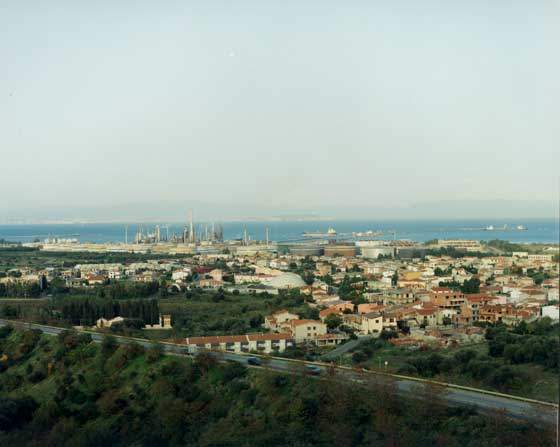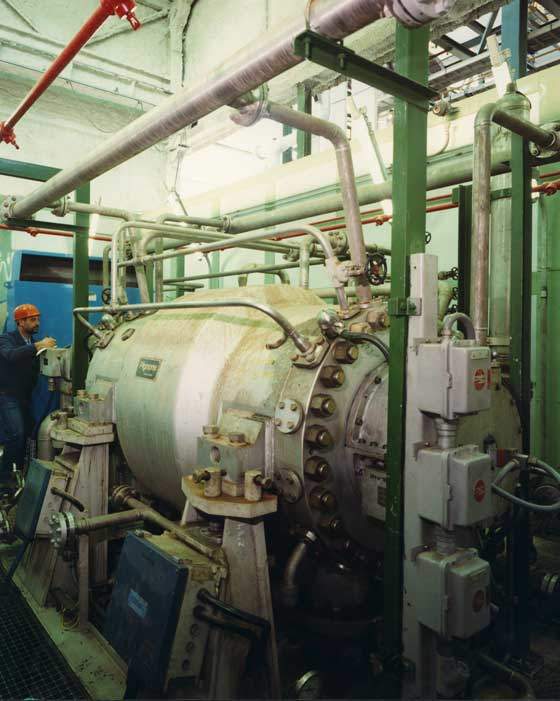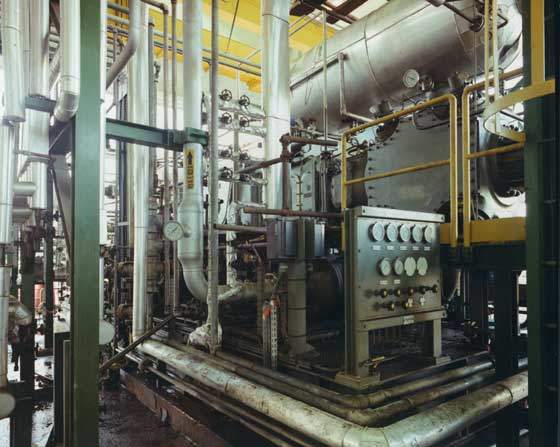The Sarlux integrated gasification combined cycle (IGCC) plant is the second largest in Europe, with a capacity of 16 million t/y. Attached to a refinery owned by Saras SpA, the plant was ordered in 1996 and completed in March 2000. The system has three gasifiers, two new GT/HRSGs (gas turbine / heat recovery steam generators), several steam turbines, and several existing GT/HRSGs and conventional boiler houses. The plant, located at Sarroc (Ca) in Italy, produces 548MWe.
Sarlux was originally a joint venture between Enron and the Italian Saras SpA. Saras already owns a major plant in Sicily.
The background to this project was Italy’s privatisation programme. ENEL was forced, under European Union rules, to open around 30% of its market to competition. The Sarlux plant was also motivated by the shrinking market for heavy oils, especially those with high sulphur content. This is one of the forces driving the increase in IGCC plants worldwide.
Residual oil gasification
The Sarlux IGCC plant gasifies residual oil from the refinery processes to generate electricity for the Sardinian power grid. It also produces medium-pressure (MP) steam, low-pressure (LP) steam and hydrogen for the SARAS refinery. Syngas produced during the process is used to power the plant. The syngas is made from hydrogen, carbon monoxide, carbon dioxide and water, with small amounts of methane, hydrogen sulphide and carbonyl sulphide. A sulphur removal unit extracts the H2S to reduce sulphur dioxide emissions. Hydrogen is removed and purified for use in the refinery.
The syngas powers three gas turbines. The exhaust is fed into an HRSG which produces steam at three pressures. High-pressure steam is used in the steam turbines and afterwards in gasification. Medium-pressure steam is sent to the refinery. For use in the gasification, 4,600t of oxygen are supplied each day by Air Liquide Italia.
Gasification process
The gasification process was developed by Texaco. The TGP is a non-catalytic, partial oxidation process in which gaseous or liquid carbonaceous substances react at high temperature and pressure. It was selected for both commercial and environmental reasons.
In this system, the hot syngas exiting the gasifier directly contacts with water in a quench chamber at the bottom of the gasifier vessel where it is cooled and saturated by the steam. This helps produce high-quality hydrogen as well as being useful in power production.
As well as the electricity, the plant can produce as much as 40,000Nm³/h of hydrogen. There are also units for feedstock preparation, soot extraction, wastewater pre-treatment, sulphur recovery and desalination.
Turnkey contract
The turnkey contract was awarded to a consortium that included General Electric, Snamprogetti and Turbotecnica. Turbotecnica is 80% owned by General Electric and 20% owned by ENI, Snamprogetti’s parent company. These supplied three GE steam and gas (STAG) 109E combined-cycle systems. Each of these has a GE MS9001E gas turbine, a steam turbine and a generator on the same shaft. The steam turbines are 61MW, 19-stage, axial flow units with 26in last stage buckets.
The consortium also supplied the HRSGs. Snamprogetti was responsible for the process plant unit, feedstock gasification unit, process plant unit substation and the desalination plant. Polysep Membrane Systems and Polybed PSA were given the contracts for hydrogen purification and recovery. Air Liquide built the oxygen production plant at a cost of $112 million. Flour Daniel was employed to help with the conceptual engineering.
Financing
The plant was financed by a syndicated loan, which was heavily oversubscribed. The arrangers were Banque Paribas, Chase, NatWest Markets and Banca Commerciale Italiana. ABN Amro, CIS and Mediocredito Centrale were co-arrangers.
Banca Nazionale del Lavoro, Dai-Ichi Kangyo, Rabobank, Dresdner, Kredietbank Financial Services, IBJ, Royal Bank of Scotland, WestLB, Fuji, Sumitomo and Cariplo were sub-underwriters. The finance amounted to 94 trillion Lira ($1.2 billion).






